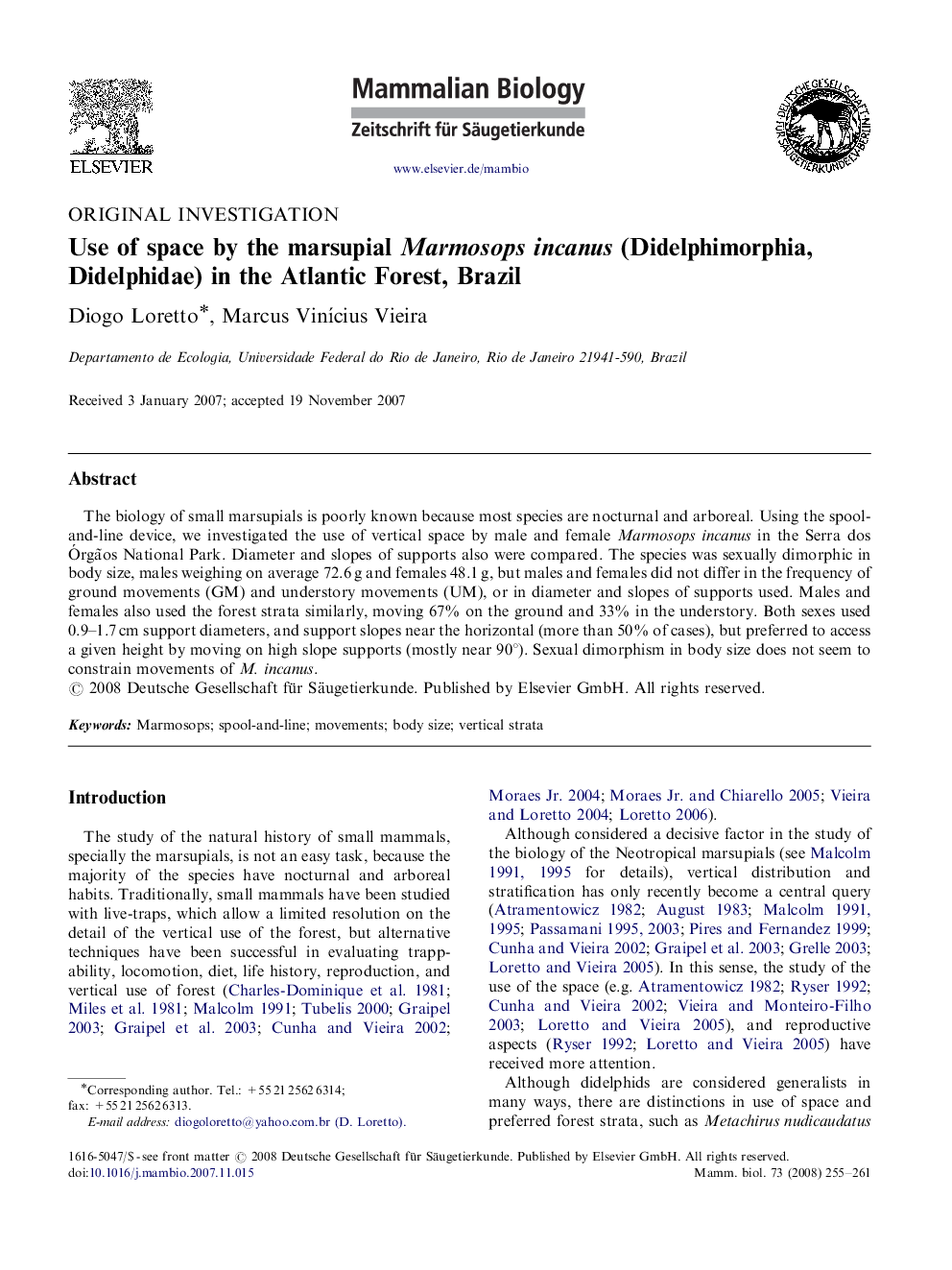| کد مقاله | کد نشریه | سال انتشار | مقاله انگلیسی | نسخه تمام متن |
|---|---|---|---|---|
| 2194188 | 1098423 | 2008 | 7 صفحه PDF | دانلود رایگان |

The biology of small marsupials is poorly known because most species are nocturnal and arboreal. Using the spool-and-line device, we investigated the use of vertical space by male and female Marmosops incanus in the Serra dos Órgãos National Park. Diameter and slopes of supports also were compared. The species was sexually dimorphic in body size, males weighing on average 72.6 g and females 48.1 g, but males and females did not differ in the frequency of ground movements (GM) and understory movements (UM), or in diameter and slopes of supports used. Males and females also used the forest strata similarly, moving 67% on the ground and 33% in the understory. Both sexes used 0.9–1.7 cm support diameters, and support slopes near the horizontal (more than 50% of cases), but preferred to access a given height by moving on high slope supports (mostly near 90°). Sexual dimorphism in body size does not seem to constrain movements of M. incanus.
ZusammenfassungDie Biologie kleiner Beuteltiere ist wenig bekannt, da die meisten Arten nachtaktiv und arboreal sind. Mittels der Spool-and-Line-Methode wurde die vertikale Raumnutzung von männlichen und weiblichen Tieren der Art Marmosops incanus im Serra-dos-Órgãos-Nationalpark untersucht. Durchmesser und Neigung der genutzten tragenden Strukturen wurden verglichen. Die Art zeigte geschlechtsspezifische Gewichtsunterschiede: Männchen wogen durchschnittlich 72.6 g, Weibchen im Durchschnitt 48.1 g. Die Geschlechter unterschieden sich jedoch nicht hinsichtlich der Aufenthaltsfrequenz am Boden oder im Unterholz und auch nicht bezüglich Durchmesser und Neigung sie tragender Strukturen. Sowohl Männchen als auch Weibchen verbrachten ca. zwei Drittel der Zeit am Boden und ein Drittel im Unterholz. Der Geschlechtsdimorphismus in der Körpergröße bei M. incanus scheint demnach keine Auswirkungen auf die Bewegungen oder Beweglichkeit zu haben.
Journal: Mammalian Biology - Zeitschrift für Säugetierkunde - Volume 73, Issue 4, 15 July 2008, Pages 255–261